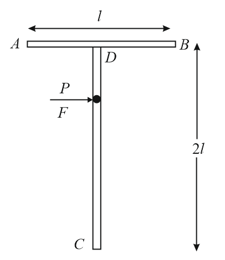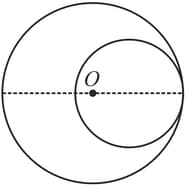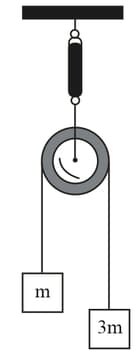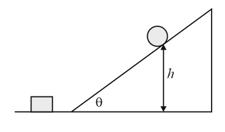Embibe Experts Solutions for Chapter: Rotational Motion, Exercise 3: Level 3
Embibe Experts Physics Solutions for Exercise - Embibe Experts Solutions for Chapter: Rotational Motion, Exercise 3: Level 3
Attempt the practice questions on Chapter 5: Rotational Motion, Exercise 3: Level 3 with hints and solutions to strengthen your understanding. Physics Crash Course JEE Main solutions are prepared by Experienced Embibe Experts.
Questions from Embibe Experts Solutions for Chapter: Rotational Motion, Exercise 3: Level 3 with Hints & Solutions
A shaped object with dimensions shown in the figure is lying on a smooth floor. A force is applied at the point parallel to such that the object has only the translational motion without rotation. The location of with respect to is,

A circular plate of uniform thickness has a diameter of . A circular portion of diameter is removed from one edge of the plate as shown in the figure below. The position of centre of mass of the remaining portion is

If the system is released, then the acceleration of the centre of mass of the system:

A solid sphere is rotating in free space. If the radius of the sphere is increased keeping mass same which one of the following will not be affected?
A spherical rigid ball is released from rest and starts rolling down an inclined plane from height as shown in the figure. It hits a block at rest on the horizontal plane (assume elastic collision). If the mass of both the ball and the block is and the ball is rolling without sliding, then the speed of the block after collision is close to

(take )
A circular disc of mass and radius is rotating about its axis with angular speed If another stationary disc having radius and same mass is droped co-axially on to the rotating disc. Gradually both discs attain constant angular speed the energy lost in the process is of the initial energy. Value of is
Two masses are moving perpendicular to the rod of mass with velocities as shown in the figure. The length of the rod is . Find the ratio of the final velocity of the rod and its angular velocity if the masses stop at their place after collision.

A hoop of radius and mass rotating with angular velocity is placed on a rough horizontal surface. The initial velocity of centre of the hoop is zero. What will be the velocity of the centre of the hoop when it ceases to slip?
